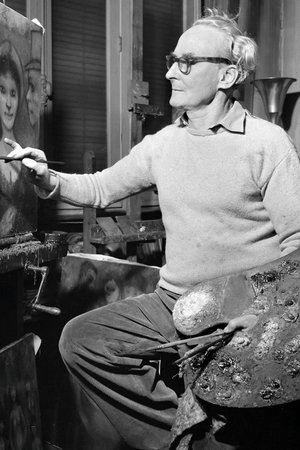Édouard Goerg (1893-1969)
Alias:
Edouard Joseph Goerg
Birthplace:
Sydney, Australia
Born:
June 9, 1893
Died:
April 13, 1969
Edouard Joseph Goerg (1893-1969), was born in Australia, in Sydney, where his parents, French, were champagne merchants. He moved to Paris in 1900 and intended to paint, while traveling a lot, in Italy, India, Ceylon. He was a pupil of Paul Sérusier and Maurice Denis at the Ranson Academy between 1913 and 14. From the 1920s, he established himself as one of the figureheads of expressionism and will remain one of its most brilliant representatives. He also flirts with surrealism. Until the early 1930s, the work of Edouard Goerg denounced the failings of the bourgeois society from which he came. Arranged marriages, going out, family life. He is caustic, biting, his subjects deformed to the point of caricature, his palette, originally dark, gradually brightens. The events of February 6, 1934, the rise of fascism in Europe, the war in Spain, inspired a series of so-called fantastic works. These visions end with the declaration of war, Goerg then defies the occupier with his carefree flower girls, as if life were beautiful... He painted a few religious paintings in the 1950s, but women, girls and ingenues his paintings will bloom until the last. Sometimes accompanied by ridiculous men, her youthful verve turning into irony over time. But the real subject of Edouard Goerg's paintings is painting itself. During the Occupation, his wife of Jewish origin had to go into hiding and died for lack of care. Goerg will be traumatized and will have a hard time returning to a normal life. Nevertheless, in the 1950s, he taught the art of engraving at the Ecole des Beaux-Arts in Paris, then became a member of the Academy of Fine Arts in 1965. He remarried and rediscovered a certain joie de vivre, his wife becoming one of his favorite themes, including the famous "women-flowers", all in serene melancholy. Alas, the respite was short-lived, he died in Callian, in the Var in 1969. The work represents an unusual, obsessive world with a sumptuously enamelled palette full of nuances. His philosophical and religious research proves an excessively sensitive personality. Among the galleries that exhibited him: Paul Guillaume, Berthe Weill, Bernheim Jeune, Jeanne Castel, David and Garnier.





